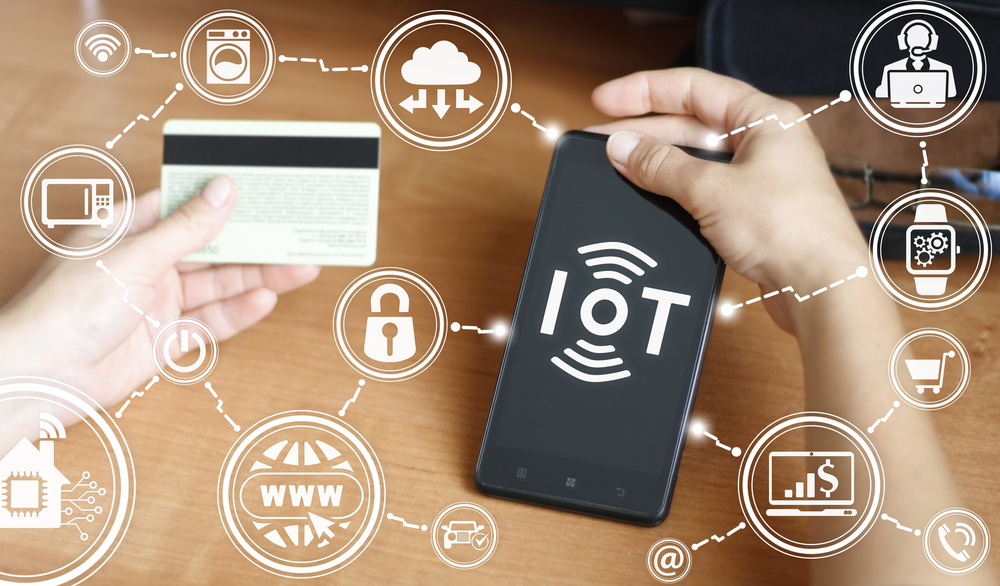The Internet of Things (IoT) is altering nearly every aspect of business at every stage of its operations. It has become the basis of a new industrial revolution that stretches far beyond industry and delves into everything from healthcare to marketing. The information customers share about themselves and that gathered from the IoT produces a huge set of data that tells us more about them than ever before.
How we gather this data, what we keep, how we analyze it, and how we use it will determine in large part how successful our marketing efforts will be.
Loosely defined, the Internet of Things is the collection of devices and sensors that gather data that can either cause or influence an action or reaction. This includes industrial sensors of course, but also fitness trackers, smart phones, smart wearable devices, and more. Essentially nearly every device connected to the internet, from the smart thermostat in your home to your Alexa device or smart TV is a part of the Internet of Things.
Social Media
One of the primary ways customers share their data is through social media. They post pictures of themselves various places, share their purchases, check in at restaurants and other venues, and share their thoughts and frustrations in real time.
This is in addition to the information they share in their profile, especially if it is public or they sign in to your website with it. Usually from this information you know their age, occupation, salary, their cell phone provider and the type of phone they use, their email address and phone number, and even if they own their home or rent.
You can use Twitter analytics or programs like Tweepsmap, Facebook analytics or other online tools, and through these you can easily determine the audience you are reaching, at least on social media. All of this data comes from your customer devices, and all of them are a part of the Internet of Things.
Big Data
Big Data is another subject entirely. While social media data does contribute to this giant data set, it comes from many different locations. From simple government census and demographic data to data gathered at both the industry and enterprise level, this information is extensive.
As customers visit your website and others, they continue to share their online behaviors: how they like to buy, how long they stay on a site, and what content they interact with. This can let you know how to better construct your site to reach them where they are.
It can also tell you what you are not doing well, giving you an opportunity to correct it. As you analyze this data, you will see who leaves your site quickly and at what point. By looking at user behavior elsewhere you can see why they don’t stay on that page or finish reading that piece of content.
This data also lets you see gaps and successes in your marketing. What reach are your competitors having that you are not? What audience are you reaching that they are not? How can you change your marketing plan to reach them in a more meaningful way?
Data, properly gathered and analyzed, is an extremely useful part of making your website work for you, and increasing conversion rates. Targeting is the key, and data gives you the tools to enhance targeting efforts.
Real World Interactions
The web is not the only place the internet of things can inform you about your customers. The things they share from their devices, their location and check in data, can let you know how they interact with both businesses and individuals in the real world.
This means you can determine buying habits, life patterns, and lifestyle cues that let you offer them something both meaningful and engaging from the very beginning. It is about developing a relationship with your customer, and knowing where are how to reach out to them is a key to this.
Providing customers with opportunities to enrich their lives through your product or service is really the secret to making them a customer for life. Reaching out to them, surrounding them with a community, and building trust make yours the brand they go to time after time.
The Internet of Things lets you gather this data and interact this way with your customer all of the time.
The nature of the Internet of Things and the Big Data it brings to marketers’ fingertips means that your marketing efforts will be changed forever. They will be more effective and have a greater impact than ever before, provided you take the data you have and analyze and apply it properly.
Conclusion
To make the Internet of Things a part of your marketing efforts, you must engage in social listening, gather Big Data and use it properly, and apply it to your real world-interactions. Your business will not only be successful, but it will be more efficient, profitable, and fun as well. Did you find the information in this article helpful? leave us a comment in the section below.
